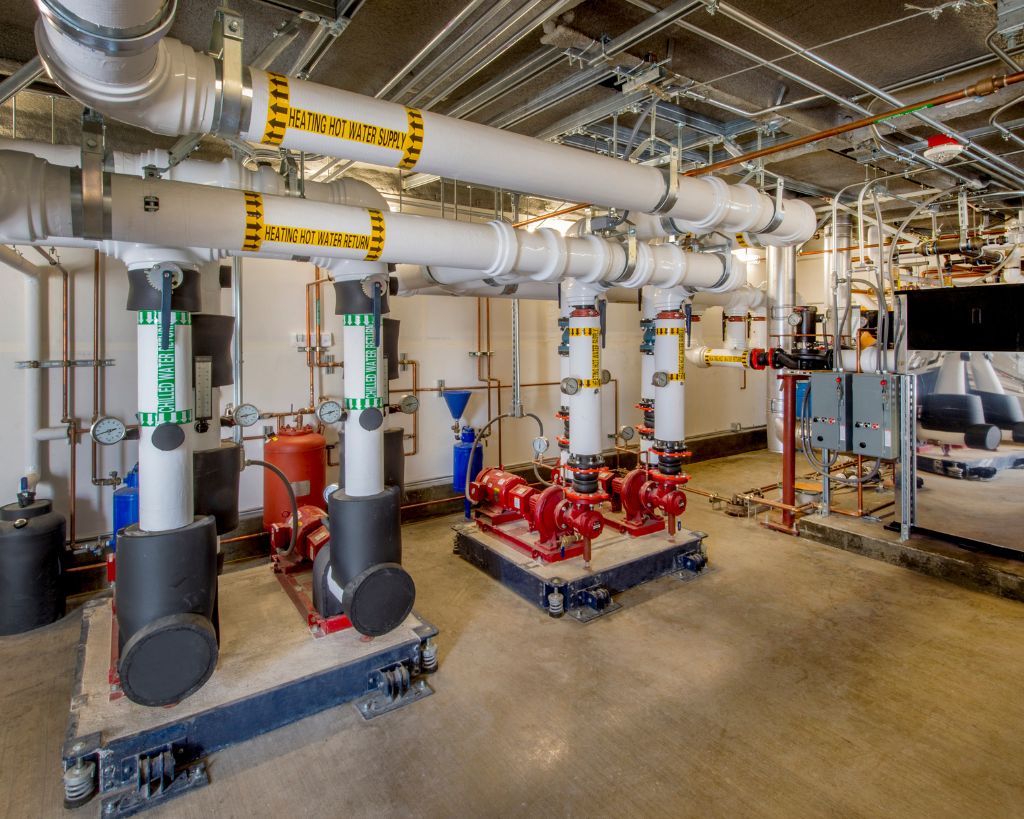What is an Air Handler?
Commercial air handlers are integral components of HVAC systems in commercial buildings, tasked with circulating and conditioning air to maintain optimal indoor comfort. Understanding how they work is essential for building owners and facility managers.
Components and Configuration
Commercial air handlers consist of several key components, including fans, filters, heating and cooling coils, dampers, and controls. The air handler is typically housed in a metal enclosure and connected to ductwork that distributes conditioned air throughout the building. The fans within the air handler are responsible for circulating air through the system, while filters remove airborne contaminants and particles to maintain indoor air quality.
If I Have an Air Handler, What Do I Need to Know?
Regarding commercial air handlers, there are three basic categories to consider. These three concepts overlap and integrate. When all work together efficiently, we get a happy, healthy building.
1. The Temperature
Air handlers modify the temperature of the air with heat exchangers, usually called coils, which are essentially metal radiators through which heated or chilled water circulates. The air passes across the coils and “exchanges” temperatures with the liquid. In the heating season, commonly a heating coil will have hot water, driven from a boiler system, circulating through it. The air passes across the coil, absorbing heat into the air stream. In the cooling season, the opposite happens–a cooling coil will have chilled water, driven from a chiller, circulating through it. The air passes across the coil, divesting its heat into the coil. The efficacy of a coil is determined by two factors: the functionality of the heating and cooling systems and the ability of the air to pass through it. In other words, the boiler and chiller need to be in good condition, and the coil itself needs to be clean.
2. Air Quality
With air handlers, when we refer to air quality we mean two things: Is the air clear of things that might inhibit air flow or in any way affect the functioning of other components within the system–think coils, motors, and fans; and is the air of the right quality for human consumption–think pollutants, CO2, VOCs. Both these concerns can be addressed by quality filtration, MERV 13 or better. Having robust filtration and changing the filters when needed keeps the air stream clear and, therefore, easy to move and healthy to breathe. Additionally, most commercial air handlers have louvers that let in a certain amount of fresh outside air, improving the air quality in the space.
3. The “Handling”
When we think of how the air moves through the handler, two categories come to mind: the components that move the air–motors, fans, belts, pulleys, louvers–and the subsequent control of those devices. All mechanical components should be maintained and inspected regularly. Grease the motors, change the belts, and do everything necessary to maintain air quality–change your filters! Good air quality ensures the mechanical components do not get overworked or abused. When your components are in good working order, we still ask, are they working the way we want? In other words, do the louvers open when they should, is the fan running at the right speed, are we getting the correct amount of outside air? If the outside air louver is stuck open in January because the actuator broke, you’ll get plenty of fresh air at ten times the cost. Facilities without optimized controls leave themselves open to dysfunction which can result in thousands of dollars in utilities and repairs–not to mention an uncomfortable, unhealthy building.




